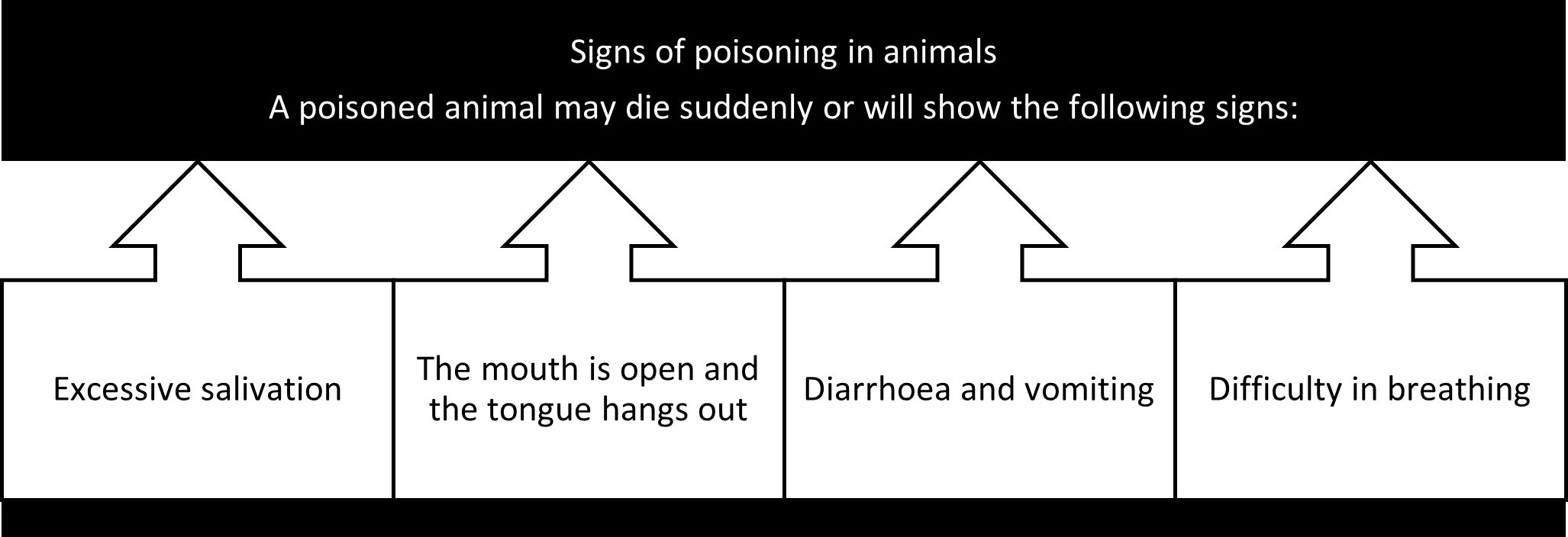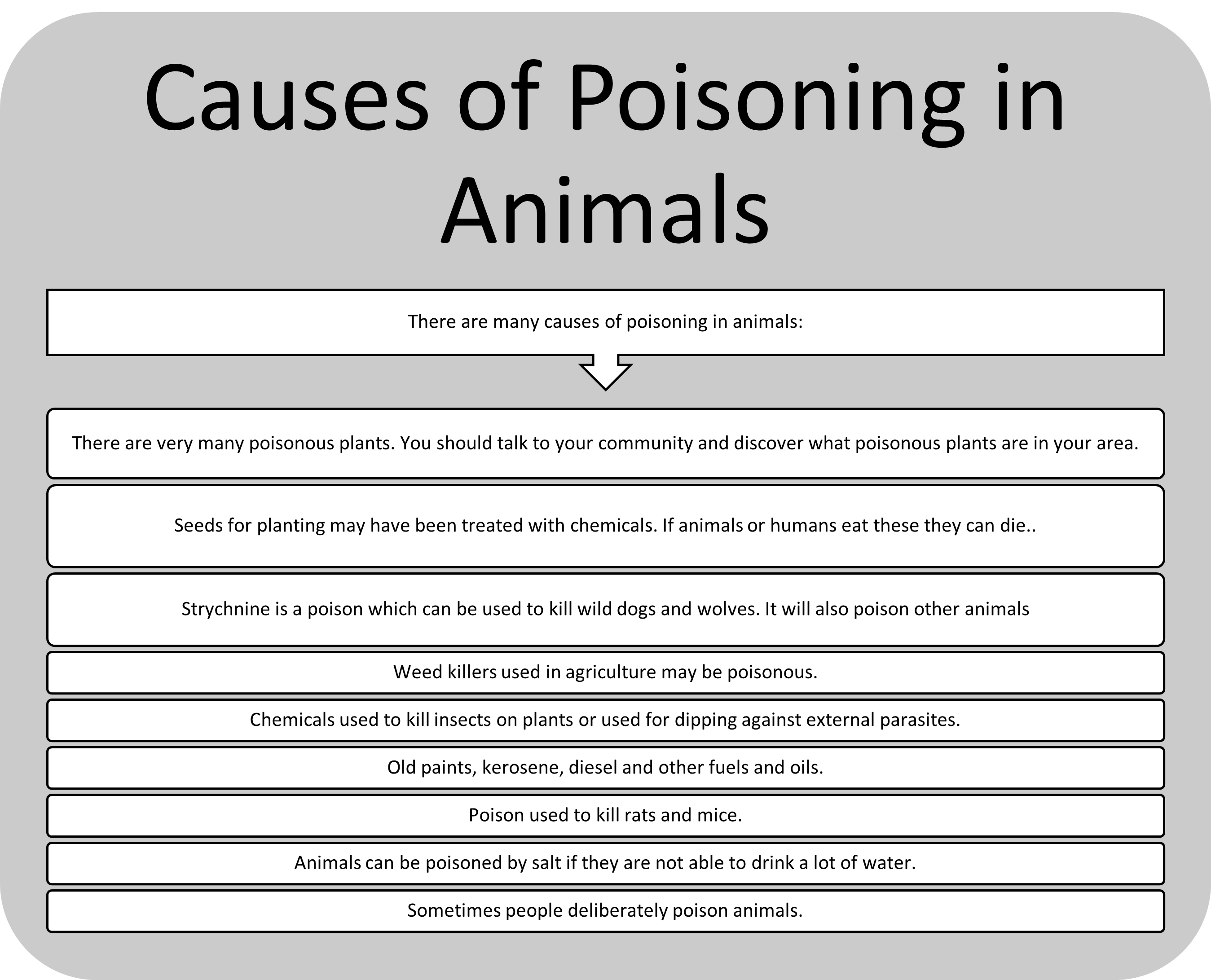Poisoning animals is not recommended and you also run the risk of the cattle of the farm ingesting the poison. Here follows some information on common poisons encountered and some recommendations for antidotes.

The use of chemical compounds will, and should, always be controversial. Most poisons kill sentient animals inhumanely and should not be considered for use on vertebrate animals. However, some poisons kill as humanely as any other lethal method and can often be applied in ways not possible with the other methods. This is very significant in the light of the facts about the learning ability of the animals. As many acceptable control options as possible need to be used to effectively stop damage. The most effective weapon against abuse is to furnish the affected parties with the ability to stop damage in acceptable ways.
The toxic collar is an example. This is the only method yet devised that has the potential to be 100% selective in killing only damage causing individual predators. The Coyote Getter, when used with a pheromonal lure is another indispensable tool to be used in selectively alleviating predator damage. The prerequisite is proper training to empower the livestock owner to use the equipment effectively.
Poisoned carcasses have been popular in the past and this caused an untold amount of damage to our natural heritage. This abuse has been whittled down to small Single Lethal Dose Baits (SLDBs) that are still in common use the world over. SLDBs have little application in damage control. It has been used mainly in population suppression efforts, but when dealing with the intelligent animals that we encounter in ADC, it proves not to be effective. It mostly targets the wrong sector of the population and animals in any particular area learn to avoid the baits. The fundamental problem with SLDBs in ADC is that it is the bait and that damage-causing individuals are the least prone to take the bait.
Lures to get SLDBs more selective have been suggested. All the really selective lures that have been discovered have pheromonal properties and is not perceived as food by the animal. They may even pick up the bait in their mouth and carry it for a distance, but then drops it. To get poisoned the animal has to swallow the bait! This is where the coyote getter comes into its own with a pheromonal bait. When the animal picks it up it sends a deadly dose of cyanide down the animal's throat.
The chemical used as poison has to be screened and selected with great care. There are thousands of poisons on the market - by definition all to kill. Some show selectivity between taxonomic groups of animals but this could not yet be fully utilized in the vertebrate ADC field of operation. When distributing poison in our environment extreme responsibility is a prerequisite. Environmentally damaging poisons have been promoted by well-known and respected conservation NGOs, by not properly investigating the substance.
Agricultural poisons may only be used as prescribed on the label. When eelworm or stemborer poisons are used to kill predators it is illegal. There is quite a stiff fine or even jail time for a person when caught.
Selectivity almost always is dependent on an intimate knowledge of the target animal (even individual) as well as the non-target animals present, and thereby use of the best equipment for the situation, but most importantly the exact placement of the equipment. This is as true of SLDBs as it is of leghold traps or captures cages.


Treating Poisoned Animals
You cannot do much in a case of poisoning. You should ask for veterinary help as soon as possible. Try to discover what caused the poisoning and stop other animals from being poisoned.
Charcoal mixed with water and given as a drench is a good treatment for poisoning. Give 1 gm for every 20 kg of body weight.
Kaolin (china clay), a white powder, can be mixed with water and given as a drench. Give 10 gm. to a small animal and 200 gm. to a horse or camel.